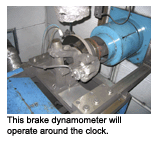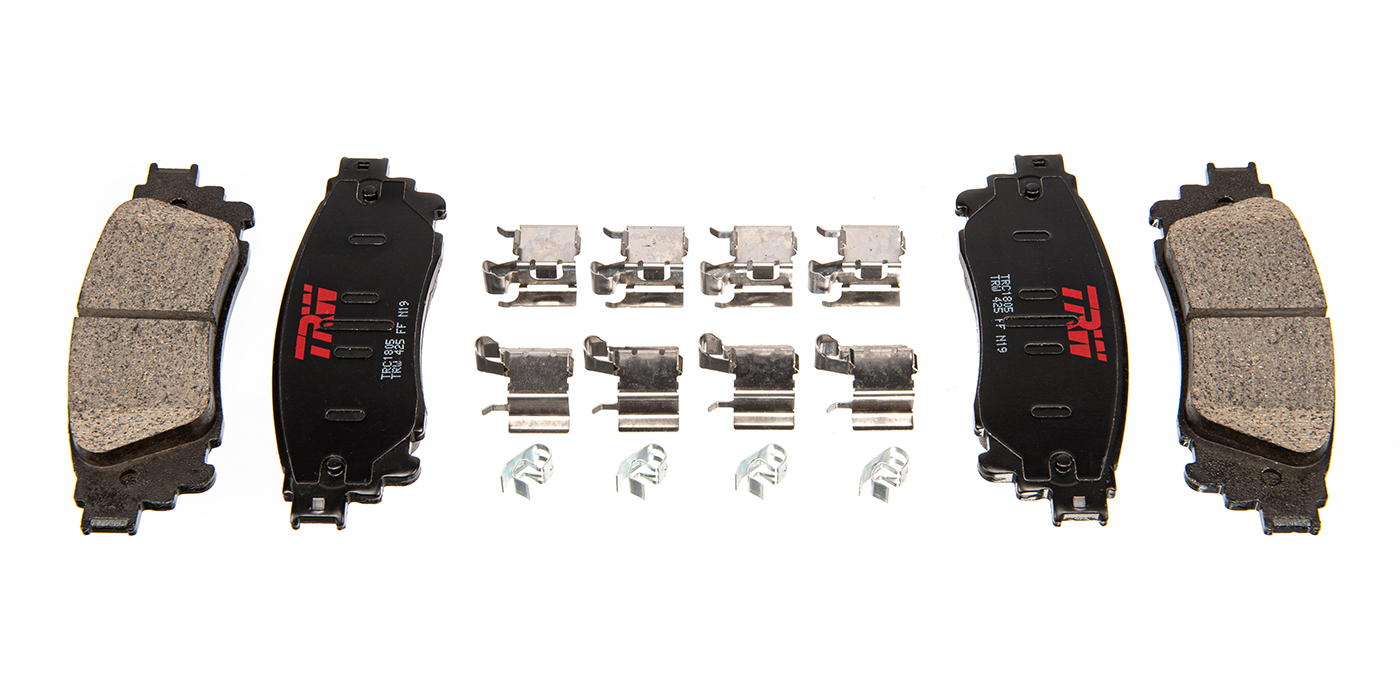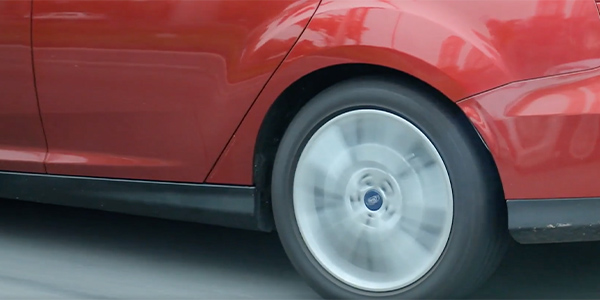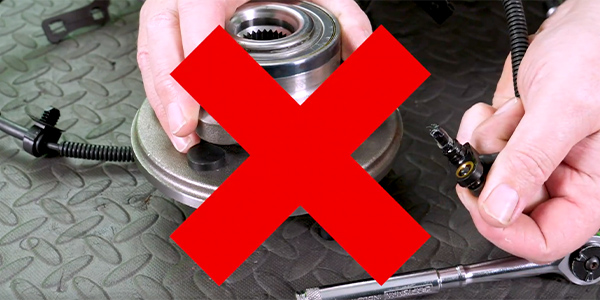How do you select the right brake pad for a vehicle? And, how do you select the right friction line to stock at your shop or have as your first call? These are difficult questions to answer. Every time your shop installs a set of brake pads on a vehicle you are taking a gamble that the friction formulation will meet your customer’s expectations. But, like all risky situations you have ways to stack the deck in your favor.
Buying a quality brake pad is like buying medicine. When you are buying a legal drug, you are not just paying the cost to manufacture, package and market the pill. The bulk of what you are paying for is research and development. The same is true for brake pads.
Aftermarket brake pads require a great deal of testing and engineering because they are made for a specific vehicle. A quality brake pad manufacturer will spend a lot of time and money developing a brake pad application for your vehicle. This includes simulated and on-the-vehicle testing. These types of testing are time and equipment intensive.
As a technician, it can be difficult to judge a brake pad before you put it on the vehicle. But, doing your homework and looking for certain visual cues can help you make the right choice.
CATALOGS
When you first start looking for a brake pad application, chances are you will start in the pages of a catalog or in front of a computer screen.
Before you start looking at price, look at what the pad manufacturer is calling the pad or formulation. Many manufacturers will have multiple pad types for one application. Some of the distinctions in the lines may be guided by price, but many manufacturers use material types as product specifiers.
CERAMIC
Ceramic material’s structural properties are very stable under high temperatures, much like Corning cookware. But this is where the comparison ends. Ceramic materials that go into a brake pad are very small strands that are engineered to be a certain length and width.
There are three advantages of ceramic pads in certain applications. First, since the ceramic materials offer stable performance under a wide range of temperatures, they can offer quiet performance. Second, ceramic brake pads manage heat in the caliper better on some vehicles than some non-ceramic applications. Third, ceramic brake dust does not show up on or stick to wheels like some other brake pad formulations. This could be an important factor if you have an expensive set of custom wheels.
NAO
Soft nonasbestos organic (NAO) friction materials typically wear more than harder semi-metallic compounds. It’s hard to generalize about the wear characteristics of NAO and ceramic-based compounds because there are so many. Wear varies depending on the formula the friction supplier chooses for a particular application. Different vehicles require different coefficients of friction, so formulas are often “application engineered” to deliver the best combination of stopping power, wear resistance, pedal feel and noise control. Most premium-quality NAO and ceramic-based linings will provide long life and wear less than an equivalent set of NAO pads on the same application.
KEVLAR
If you were to hold Kevlar fibers in your hand, they would look like cotton candy. But this innocent looking material is stronger than steel and can stop a bullet, or keep your brake pads together under high temperature and pressure.
Like ceramic materials, it is used as a fiber in brake pads to give them structure. It is a very expensive material, but it can help extend the life of the brake pad.
SEMI-METALLIC
Semi-Metallic pads use metal fibers to give structure and provide friction. The metals used are typically high quality steel, copper and other exotic metals.
So what is the other part of the semi-metallic mix? It is a variety of materials like glues, lubricants and structural fibers. The manufacturer will blend the components together to give the best performance for that application.
 APPLICATION/VEHICLE SPECIFIC LINES
APPLICATION/VEHICLE SPECIFIC LINES
If all of the material jargon is too much to deal with, you can look for a line that touts itself as vehicle or application specific. These lines can help you leave the material selection up to the manufacturer.
What makes one friction material quieter or better than another? It is a two-part answer. First, if a friction material is better at keeping a constant coefficient of friction across broad temperature ranges and environmental conditions, it probably is a quiet pad. A “consistent” friction material causes less vibrational excitation variation at the friction coupling by having consistent brake torque at environmental extremes of humidity and temperature (-40F to 500F).
Second, some friction materials leave or transfer a layer of friction material (transfer film or “seasoning”) on the rotor’s surface that some friction material companies claim can smooth out the rotor surface, thereby causing less excitation and noise at the friction coupling. Also, this transfer layer may not be as sensitive to heat induced brake torque variation.
TO THE NAKED EYE
After you have ordered the brake pad and it has been delivered, you can now inspect it with the naked eye. Packaging of the pads can be an indication of the quality. But don’t judge a book by its cover. Look at the quality of the finish, shim materials and finish.
Look at the over all finish of the pad. Many manufacturers will use a high-quality paint or coating on their pads. This coating is designed to resist corrosion and hopefully can survive high temperatures. The finish should not easily scratch off.
BACKING PLATES
The backing plate creates a foundation for the friction material that must be stiff and stable. If a backing plate is flexing, the friction material is not in full contact with the rotor. This can cause longer stops, a softer brake pedal, and it increases the potential for unwanted noise. Look at the thickness of the backing plate and the edges. A poorly stamped backing plate will have rough edges. Also, look at the areas where the pad contacts the caliper. These areas should be as smooth as possible.
FRICTION SHAPE
Another aspect to look at is the shape of the friction material on the brake pad. OEMs tune the shape of the brake pad to the overall system. This includes elements like overall length, width and design elements like chamfers and slots. These physical dimensions and design elements can reduce excitation and shift natural vibrational frequencies. Some aftermarket brake pad manufacturers will tune the shape of their pads to suit older vehicles and the characteristics of their friction material blend.
SHIMS
Look at the shim material on the back of the pad. If possible, remove the shim and drop it gently on a hard surface. If the shim makes a nice “thunk,” it is made of a good material. If the pad makes a rattling sound, like a dropped wrench, chances are it will not make a good sound insulator.
Brake shims are not designed for adjusting spacing/distance between friction material and the rotor. Shims provide multifunction noise control as a component attached to the friction pad backing plate. A quality brake shim can prevent brake noise during the entire life of the brake job and will not dry out or be displaced over time like some lubricants. But remember, a shim does not do its job if it is left in the box.
THE UNSEEN ASPECTS
When you are buying a brake pad you are also buying the engineering and research behind it. When an aftermarket brake pad manufacturer is developing or reverse engineering an application, rarely do they test on an actual vehicle. This type of testing is expensive and time consuming. Also, the human element can change the results. A brake dynamometer can test brake systems in a controlled environment that mirrors the real world. Brake dynamometer can run 24 hours a day and can measure the performance of a braking system over its entire lifetime. Plus, would you want to be a brake pad guinea pig for 25,000 miles?
A brake dynamometer can be more sophisticated and larger than an engine dynamometer. Brake dynamometers can simulate the conditions the brake system will experience in a much shorter time. This means that a brake dynamometer can simulate the mass, inertia and performance capabilities of a vehicle.
The typical brake dynamometer can cost anywhere between $250,000 (used) to more than $1 million. Some brake friction suppliers own dynamometers, while some lease dynamometers from testing companies.
In the engineering world, there is a saying that goes: “One test is worth a thousand expert opinions.” This saying is also true for the brake technician.
Knowing that the company you are buying friction products from has taken the time and made the investment to carry out brake dynamometer testing can mean an extra measure of confidence.
Third party
The biggest difficulty in aftermarket dynamometer testing and third-party certification is not time on the dynamometer, but baseline testing for older vehicles for some test standards. With some aftermarket third-party certifications, it is necessary to have the performance data of the original vehicle with the stock system intact to compare to the new friction materials. If it is a newer vehicle, the stock system can be tested or the OEM’s data can be used.
If an original vehicle or OEM data can’t be found, there is no way to put some aftermarket certifications on the box. The search for data and test subjects becomes even harder if you are looking for dual-ended dynamometer test data of older vehicles. This is why you may never see some third-party certification for older applications.












